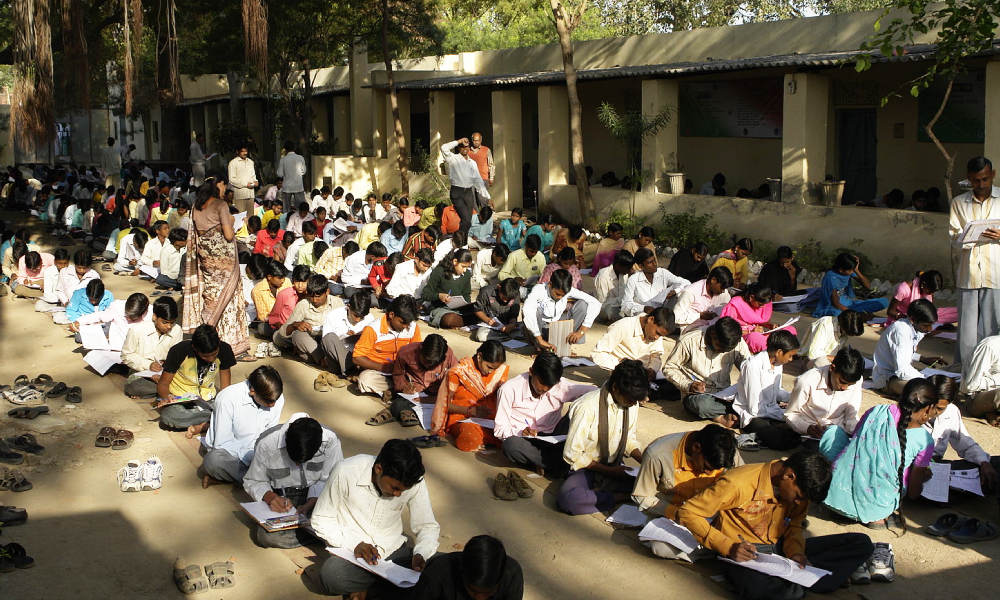The National Education Policy (NEP) 2020 was released on July 30, 2020. It will replace the National Policy on Education, 1986. Key recommendations of the NEP include: (i) redesigning the structure of school curriculum to incorporate early childhood care and education, (ii) curtailing dropouts for ensuring universal access to education, (iii) increasing gross enrollment in higher education to 50% by 2035, and (iv) improving research in higher education institutes by setting up a Research Foundation. In this blog, we examine the current status of education in the country in view of some of these recommendations made by the NEP.
Universal Access To Education
The NEP states that the Right to Education Act, 2009 has been successful in achieving near universal enrollment in elementary education, however retaining children remains a challenge for the schooling system. As of 2015-16, Gross Enrollment Ratio was 56.2% at senior secondary level as compared to 99.2% at primary level. GER denotes enrollment as a percent of the population of corresponding age group. Further, it noted that the decline in GER is higher for certain socio-economically disadvantaged groups, based on: (i) gender identities (female, transgender persons), (ii) socio-cultural identities (scheduled castes, scheduled tribes), (iii) geographical identities (students from small villages and small towns), (iv) socio-economic identities (migrant communities and low income households), and (v) disabilities. In the table below, we detail the GER in school education across: (i) gender, and (ii) socio-cultural identities.
Table 1: GER In School Education For Different Gender And Social Groups (2015-16)
Data for all groups indicates decline in GER as we move from primary to senior secondary for all groups. This decline is particularly high in case of Scheduled Tribes. Further, we analyse the reason for dropping out from school education. Data suggests that the most prominent reason for dropping out was: engagement in domestic activities (for girls) and engagement in economic activities (for boys).
Table 2: Major Reasons For Dropping Out (Class 1-12) (2015-16)
The NEP recommends strengthening of existing schemes and policies which are targeted for such socio-economically disadvantaged groups (for instance, schemes for free bicycles for girls or scholarships) to tackle dropouts. Further, it recommends setting up special education zones in areas with significant proportion of such disadvantaged groups. A gender inclusion fund should also be setup to assist female and transgender students in getting access to education.
Increasing GER In Higher Education To 50% By 2035
The NEP aims to increase the GER in higher education to 50% by 2035. As of 2018-19, the GER in higher education in the country stood at 26.3%. Figure 2 shows the trend of GER in higher education over the last few years. Note that the annual growth rate of GER in higher education in the last few years has been around 2%.
Figure 1: GER in Higher Education (2014-15 to 2018-19)
Table 3: Comparison of GER (higher education) with other countries
The NEP recommends that for increasing GER, capacity of existing higher education institutes will have to be improved by restructuring and expanding existing institutes. It recommends that all institutes should aim to be large multidisciplinary institutes (with enrollments in thousands), and there should be one such institution in or near every district by 2030. Further, institutions should have the option to run open distance learning and online programmes to improve access to higher education.
Foundational Literacy And Numeracy
The NEP states that a large proportion of the students currently enrolled in elementary school have not attained foundational literacy and numeracy (the ability to read and understand basic text, and carry out basic addition and subtraction). It recommends that every child should attain foundational literacy and numeracy by grade three.
Table 4 highlights the results of the National Achievement Survey 2017 on the learning levels of students at Grade 3 in language and mathematics. The results of the survey suggest that only 57% students in Grade 3 are able to solve basic numeracy skills related to addition and subtraction.
Table 4: NAS results on learning level of Grade-3 students
To achieve universal foundational literacy and numeracy, the Policy recommends setting up a National Mission on Foundational Literacy and Numeracy under the MHRD. All state governments must prepare implementation plans to achieve these goals by 2025. A national repository of high-quality resources on foundational literacy and numeracy will be made available on government’s e-learning platform (DIKSHA). Other measures to be taken in this regard include: (i) filling teacher vacancies at the earliest, (ii) ensuring a pupil to teacher ratio of 30:1 for effective teaching, and (iii) training teachers to impart foundational literacy and num…













